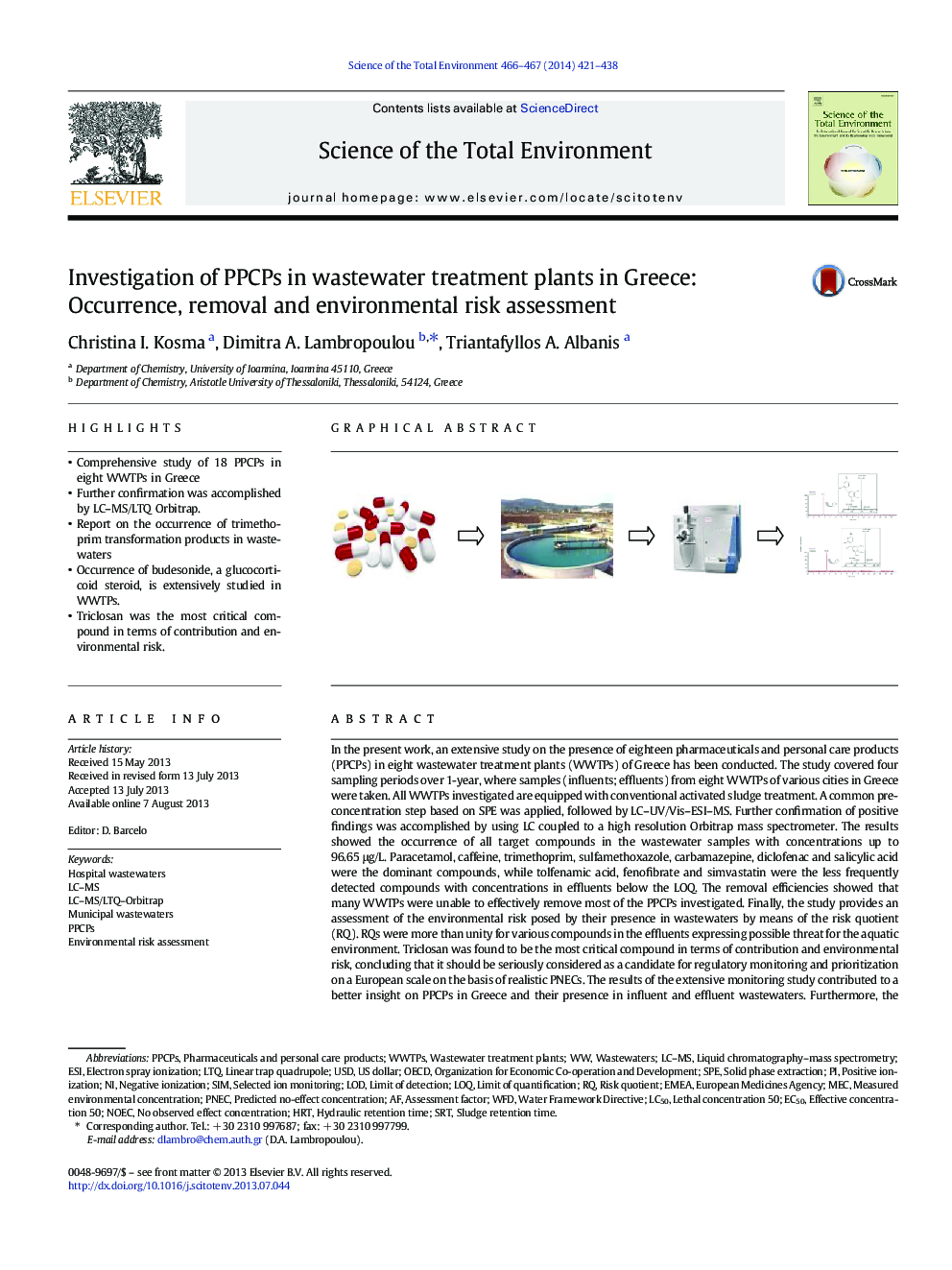| کد مقاله | کد نشریه | سال انتشار | مقاله انگلیسی | نسخه تمام متن |
|---|---|---|---|---|
| 6332248 | 1619795 | 2014 | 18 صفحه PDF | دانلود رایگان |

- Comprehensive study of 18 PPCPs in eight WWTPs in Greece
- Further confirmation was accomplished by LC-MS/LTQ Orbitrap.
- Report on the occurrence of trimethoprim transformation products in wastewaters
- Occurrence of budesonide, a glucocorticoid steroid, is extensively studied in WWTPs.
- Triclosan was the most critical compound in terms of contribution and environmental risk.
In the present work, an extensive study on the presence of eighteen pharmaceuticals and personal care products (PPCPs) in eight wastewater treatment plants (WWTPs) of Greece has been conducted. The study covered four sampling periods over 1-year, where samples (influents; effluents) from eight WWTPs of various cities in Greece were taken. All WWTPs investigated are equipped with conventional activated sludge treatment. A common pre-concentration step based on SPE was applied, followed by LC-UV/Vis-ESI-MS. Further confirmation of positive findings was accomplished by using LC coupled to a high resolution Orbitrap mass spectrometer. The results showed the occurrence of all target compounds in the wastewater samples with concentrations up to 96.65 μg/L. Paracetamol, caffeine, trimethoprim, sulfamethoxazole, carbamazepine, diclofenac and salicylic acid were the dominant compounds, while tolfenamic acid, fenofibrate and simvastatin were the less frequently detected compounds with concentrations in effluents below the LOQ. The removal efficiencies showed that many WWTPs were unable to effectively remove most of the PPCPs investigated. Finally, the study provides an assessment of the environmental risk posed by their presence in wastewaters by means of the risk quotient (RQ). RQs were more than unity for various compounds in the effluents expressing possible threat for the aquatic environment. Triclosan was found to be the most critical compound in terms of contribution and environmental risk, concluding that it should be seriously considered as a candidate for regulatory monitoring and prioritization on a European scale on the basis of realistic PNECs. The results of the extensive monitoring study contributed to a better insight on PPCPs in Greece and their presence in influent and effluent wastewaters. Furthermore, the unequivocal identification of two transformation products of trimethoprim in real wastewaters by using the advantages of the LTQ Orbitrap capabilities provides information that should be taken into consideration in future PPCP monitoring studies in wastewaters.
Journal: Science of The Total Environment - Volumes 466â467, 1 January 2014, Pages 421-438